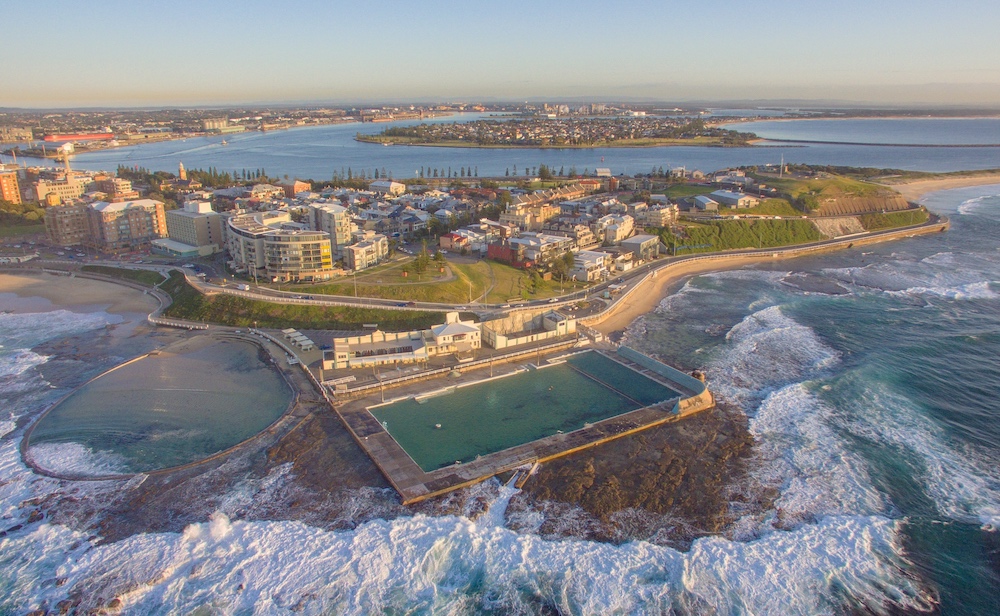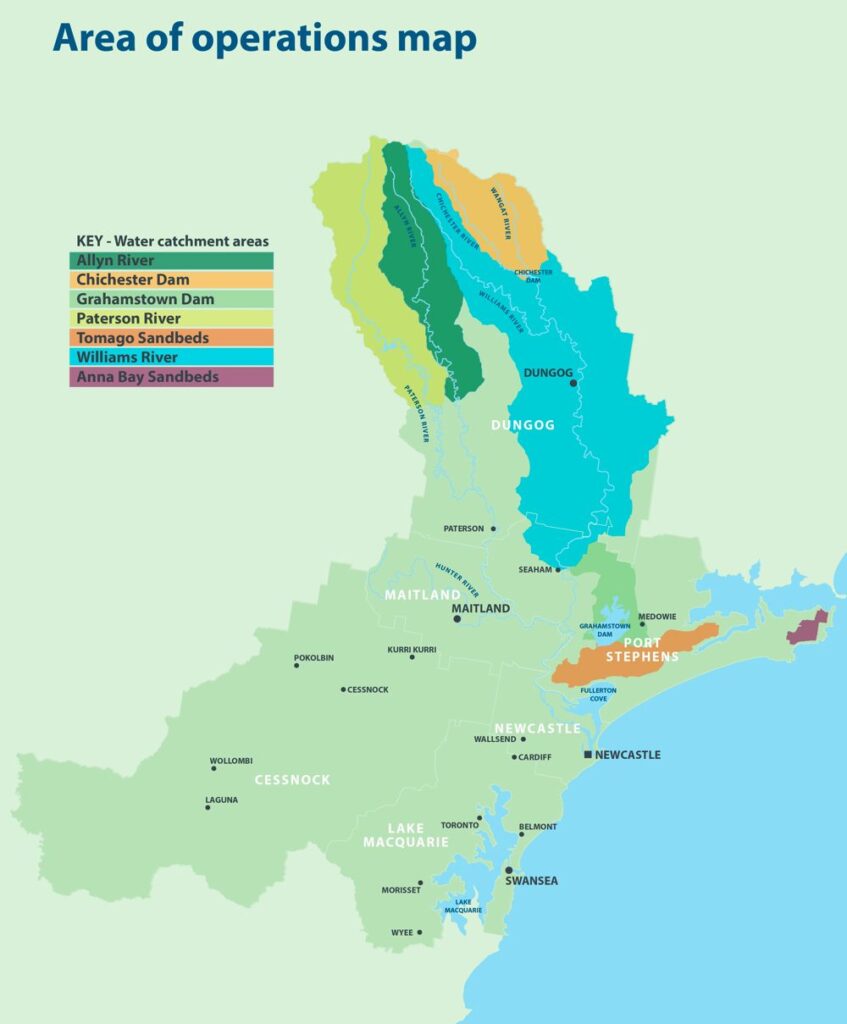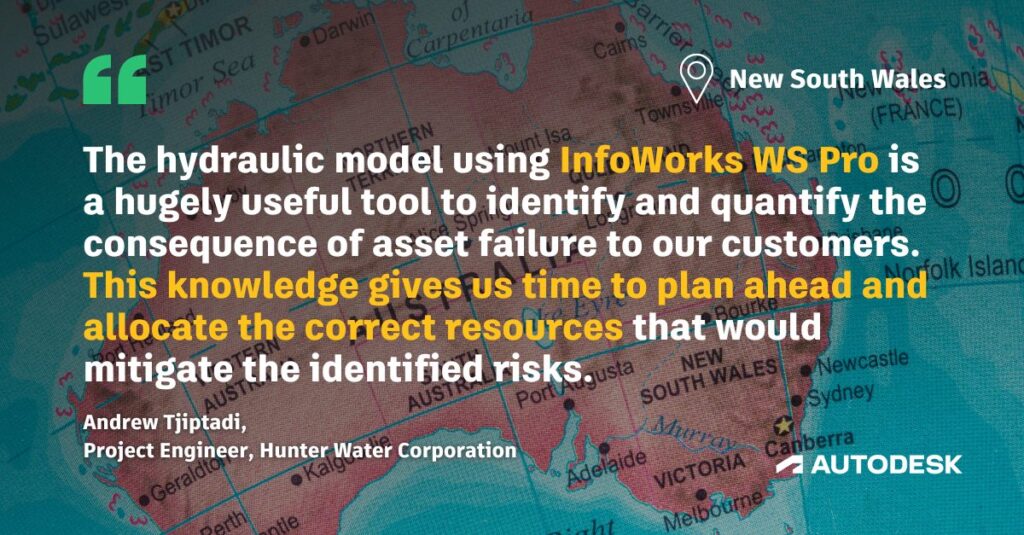& Construction

Integrated BIM tools, including Revit, AutoCAD, and Civil 3D
& Manufacturing

Professional CAD/CAM tools built on Inventor and AutoCAD
3 min read
Hunter Water Corporation (HWC) is the second largest water and sewerage utility corporation in New South Wales. This state-owned corporation has been operating since 1892 and serves a population of almost 600,000 people spread across 6,671 square kilometres in the areas of Cessnock, Lake Macquarie, Maitland, Newcastle, Port Stephens, Dungog, and small parts of Singleton.

HWC’s water distribution network delivers an average of 188 megalitres of water per day and is split into six reticulation models that contain the region’s 123 water zones. They undertake an annual risk review to assess the compliance of the network against system performance standards and planning regulatory requirements, and they’ve been using InfoWorks WS Pro to help them make that yearly review process accurate and reliable.
HWC’s annual risk assessment helps determine the utility’s exposure to risk over a 12-month period. These risks are categorised by factors like water continuity and water pressure standards.
This network risk review is a crucial decision support tool, helping them determine their future planning priorities for both capital and operational expenditures. It also, of course, helps determine their regulatory compliance based on the risk ratings of their individual assets.
“Understanding risks of our current assets is critical for the continuity of service to our community,” says HWC’s Project Engineer Andrew Tjiptadi.

The yearly review is based on the corporation’s Enterprise Risk Management (ERM) framework, which helps them plot the consequence of an asset failing with the likelihood of failure. Their ERM framework contains a risk matrix that involves many parameters based on system performance and capacity.
For example, the Consequence of Failure (CoF) criteria include water pressure and service continuity standards, while the Likelihood of Failure (LoF) criteria includes reservoir capacity and performance. HWC’s hydraulic models, which they create using InfoWorks WS Pro, enables them to calculate these parameters at different demand scenarios for all zones and assets in the entire network.
“The hydraulic model using InfoWorks WS Pro is a hugely useful tool to identify and quantify the consequence of asset failure to our customers,” says Tjiptadi. “This knowledge gives us time to plan ahead and allocate the correct resources that would mitigate the identified risks.”
The risk review process is a top-down approach, taking input from HWC’s water network zones hierarchy, individual water network zones information, and growth areas. Simulation results from their hydraulic model are generated to assess system performance and to analyse reservoir capacity.

The risk analysis then involves examining the CoF and LoF criteria, which helps determine the risk scales on each individual water zones. RAG (Red Amber Green) status is flagged for each individual zone based on supply continuity and asset criticality, which returns results for evaluating uncontrolled risks, controlled risks, and corresponding proposed actions. The output is used to inform OPEX and CAPEX planning and is fed back to the board and the regulator.
All of this is used to deliver a risk mitigation strategy with a focus on OPEX and CAPEX. Out of this comes an Operating License and Servicing Standard review, which is a regulatory report required by regulators and their board.
Their hydraulic model is an explicit all-mains digital representation of the entire water distribution network. It simulates the performance of key water assets like reservoirs, pump stations, valves, meters, and hydrants. It also represents multiple scenarios including the current and future zone demands as well as the current and future number of properties. Model runs are used to show how many customers experience low pressures during Peak Day Demand (PDD) and how many experience high pressures during Average Day Demand (ADD).
The model is also used to perform asset criticality. They can use the Critical Link Analysis (CLA) run type in InfoWorks WS Pro to automate testing and reporting of the effects of failure of a selection of links based on the time of outage and method of failure. CLA runs are performed for every shut off block or pipe sections to evaluate network resilience, pump stations criticality and hydrant locations for firefighting requirements.
The hydraulic model also gives the team a clear understanding of how the reservoirs will perform during Average Day Demand, Peak Day Demand and Extreme Week Demand.
InfoWorks WS Pro gives Hunter Water the information they need to understand the system’s performance and capacity under normal circumstances, as well as how it will operate in the future. It’s become an important tool that they can rely on every year to measure and assess their water system’s risk profile, and ensure they are always understanding the potential impact of risk on their customers.
Sign up for the One Water Blog newsletter, and we'll keep you updated about our top stories, along with the best content we find online. We only send out a newsletter when we have something interesting to share.
May we collect and use your data?
Learn more about the Third Party Services we use and our Privacy Statement.May we collect and use your data to tailor your experience?
Explore the benefits of a customized experience by managing your privacy settings for this site or visit our Privacy Statement to learn more about your options.